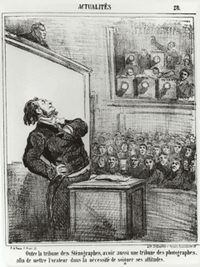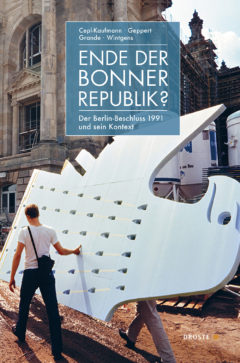Parliament and Public

Parliament and Public from the Late Eighteenth Century to the Present
Modern parliaments need the public eye. What sounds obvious and almost trivial obscures a relationship fraught with tension, for the assessment of this relationship has over time been subject to profound changes. During the nineteenth century, for instance, parliament and public were regarded as »symbiotic twins«, ensuring social and constitutional progress. Such an optimistic view is nowadays uncommon. Rather, most commentators sceptically note the »medialisation« of politics, according to which media staging increasingly superimposes parliamentary debates and decision-making processes.
Our research focus »Parliament and Public« explores the complex relationship between both institutions from a long-term historical perspective, beginning with the late eighteenth century and continuing into the present. Two closely intertwined aspects are in this respect decisive. The first assumption is that modern parliamentarianism inherently requires an institutionalised public. As the liberal expert for constitutional law, Karl Rotteck, concisely put it already in the 1830s: there is no representation without the public. According to the second assumption, parliaments and their members can credibly claim to act on behalf of the »nation« or the »people« only if they manage to maintain sustainable and mutual communication with their voters. Otherwise their claim misses the mark. In this sense, the history of parliamentary public is also a history of parliamentary power.
The functional correlation between parliament and public that emerged around 1800 has, up to the present day, shaped the political arena. It has in fact been changed in many ways by several media »revolutions« such as the rise of the popular mass press in the late nineteenth century or of electronic media in the twentieth century. The basic principle, however, prevailed. A discussion is needed on whether the described functional correlation is under serious threat from current developments of the political system – for example the increasing transfer of power to European institutions – and of the media system – including the internet. In this case, the principle of modern political representation, that is parliamentarianism, is also jeopardised.
Ende der Bonner Republik? Der Berlin-Beschluss 1991 und sein Kontext / End of the Bonn Republic? The Berlin decision of 1991 and its context
25 years after the move to Berlin, this volume is the first historical contextualisation of the transition from Bonn to Berlin.
On 20 June 1991, the Bundestag in Bonn decided that Berlin – in addition to its function as the German capital – should also be the seat of parliament and government. The decision, taken by a narrow but clear majority, was also a consequence of German reunification at the end of the Cold War. The relocation of the political establishment from the western to the eastern edge of the country also took place in the midst of accelerating processes of change in politics, society, culture and the media. In this context, the Germans’self-image was also renegotiated – metaphorically represented by the place names “Bonn” and “Berlin”.
The book reconstructs the decision-making process in parliament, reflects on the process of transition in the light of contemporary aesthetic and intellectual discourses and analyses both memories and literary representations of the “Bonn Republic”. The result is a multifaceted picture of the Federal Republic shortly after reunification – raising the question: What was and what remains of Bonn?
Current Projects
Andreas Biefang: »Die parlamentarische Bühne. Zur visuellen Repräsentation des Parlamentarismus in Deutschland von den Anfängen bis 1933« (»The Parliamentary Stage. On the Visual Representation of Parliamentarianism in Germany from the beginning to 1933«)
Exhibition
Book and exhibition on Julius Braatz, the photographer in »Bismarck’s Reichstag«
The KGParl celebrated its 50th anniversary in May 2002 with an exhibition on »Bismarcks Reichstag. Das Parlament in der Leipziger Straße. Fotografiert von Julius Braatz« (»Bismarcks’s Reichstag. The Parliament in Leipziger Straße. Photographed by Julius Braatz«). It showcased around 100 largely unknown photographs by the Berlin-based photographer Julius Braatz, taken in April and May 1889 in the Reichstag building. As a pioneer of documentary photography, Braatz was allowed access to the members of parliament whom he photographed in the lobby and the plenary hall. His pictures are arguably the very first reportage-style photos of a parliament. Not only do they allow unique insight into parliamentary everyday life. They also document the interior of the temporary Reichstag building that from 1894 fell into oblivion in favour of the Wallot building. Braatz’s photographs are surely the most important visual source of parliamentary culture of the Bismarck era.
Exhibition tie-in book
Andreas Biefang: Bismarcks Reichstag. Das Parlament in der Leipziger Straße. Fotografiert von Julius Braatz (Bismarck’s Reichstag. The Parliament in Leipziger Straße. Photographed by Julius Braatz), 320 pages, Düsseldorf 2002.
Venues of the exhibition
»Bismarck’s Reichstag« is a touring exhibition and has been shown in 17 German cities. Since June 2010 it is hosted by the Schönhausen-based Bismarck Museum of the Otto-von-Bismarck Foundation as a permanent loan.
Contact: Andreas Biefang


